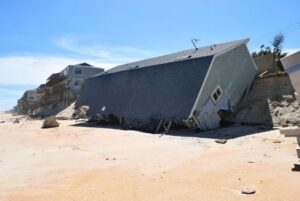Contents
Various types of wind design codes used in the building design all over the world as per the standards
Wind is the horizontal force which acts perpendicular to the gravity loading condition. The wind load is also called as lateral loading condition system. Due to this force the damages will be more sometimes because of the higher velocity values. As per the standards which is provided by the various types of wind codes provisions all over the world the effect of wind force is more when we going from the bottom storey to the top storey of the building. In this blog post you are able to learn about what are the various types of wind design codes used in the structural design as per the various country regions. This concepts will give you better idea regarding the name of the code and number of the code and year of the code provision too.

As per the code provisions it is also suggested that if the height of the building exceeds the 10m then we need to consider the wind loading effect otherwise it is not mandatory. In simple words if the height of the building greater than 10m or greater than G+2 building structure we need to consider the wind loading effect and if the height of the building is less than 10m or for Ground floor or G+1 or G+2 structures no need to consider the wind loading considerations.
The wind loading intensity on the buildings will acts in two cases one is related to the wind ward facing direction and another one is leeward facing direction. If the loading condition is acting towards the building structure from the environment it is comes under the windward direction case. Sometimes the wind load will acts from the building structure this will happens if the internal forces are having higher intensity values than the external forces. The wind load which is transferred from the inner structure to the outer structure is called as leeward direction case.

The intensity of the wind loading condition is also effects on the obstacles which are presented near to the construction site. The height of the obstacles or height of the hill regions or height of the trees are considered as the factors in the wind loading calculations. These parameter consideration is also called as terrain categories. The complete concepts of the various terrain categories considered in the building design are presented in my previous blog post read them with below specified link. The terrains are classified in to four types related to the terrain category 1, terrain category 2, terrain category 3 and terrain category 4. The intensity of wind load is more in case of terrain 1 case because of less height of near structures and obstacles. In the same process the intensity of wind load is less in case of terrain 4 case because of more height of near structures and obstacles.
Various terrain categories considered in the wind load analysis of the building
See the complete concepts in my YouTube channel video is shown in the below section
Types of wind design codes used in the structural analysis
- ASCE 7-16, wind load design using the 2018 IBC.
- AS/NZS 1170.2:2011 Standards Australia/Standards New Zealand, Structural Design Actions, Part 2 Wind Actions.
- Chinese 2010: Design of wind loads as per Chinese standards.
- EUROCODE1 2005 Actions on Structures, Part 1-4: Wind Actions, London, British Standards Institute, 2004.
- Indian 875: 2015 Design loads (other than earth quake loads) for buildings and structures- code of practice.
- Italian NTC 2008 Technical standards for construction.
- KBC 2016 Criteria of Korea Building
- NBCC 2015 National building code of Canada.
- TCVN 2737: 1995 Vietnam Standard Design codes – Loads and Actions.
- Turkish TS 498-97 Design loads for buildings Turkish standard.
- BS6399-95: Loading for buildings-Part 2: code of practice for wind loads.
- Mexican: Technical Norms for WindResistant Design.
Various types of codes used in the wind load analysis and the country name
The below table shows the various wind design codes available in the world for studying the wind loading effect on the structures
| S. No | Country Name | Code Number | Code Name |
| 1 | America | ASCE 7-16 | wind load design using the 2018 IBC |
| 2 | Australia and New Zealand | AS/NZS 1170.2:2011 | Standards Australia/Standards New Zealand, Structural Design Actions, Part 2 Wind Actions |
| 3 | China | Chinese 2010 | Design of wind loads as per Chinese standards |
| 4 | Europe | EUROCODE1 2005 | Actions on Structures, Part 1-4: Wind Actions, London, British Standards Institute, 2004 |
| 5 | India | Indian 875: 2015 | Design loads (other than earth quake loads) for buildings and structures- code of practice |
| 6 | Italy | Italian NTC 2008 | Technical standards for construction |
| 7 | Korea | KBC 2016 | Criteria of Korea Building Code |
| 8 | Canada | NBCC 2015 | National building code of Canada |
| 9 | Vietnam | TCVN 2737: 1995 | Vietnam Standard Design codes – Loads and Actions. |
| 10 | Turkish | Turkish TS 498-97 | Design loads for buildings Turkish standard |
| 11 | British | BS6399-95 | Loading for buildings-Part 2: code of practice for wind loads |
| 12 | Mexican | Mexican | Complementary. Technical Norms for Wind Resistant Design |
Follow our previous posts here
- Types of seismic codes used in the seismic analysis in the world for the building design?
- Types of beams and how to calculate the volume of concrete required for the RCC Beam
- Combined footing design by STAAD Pro software | Building design
- How to calculate the complete quantity of steel in beams, columns, slab and foundation in 1000 sft slab area.
- Which bricks are best AAC blocks or Red brick blocks in the wall construction ? Comparison between the AAC blocks and red brick blocks?
Conclusion of various codes used in the building design all over the world as per the standards
The wind is the horizontal force which is act for the buildings or other structures in lateral direction. As per the best design considerations it is important for the structural designer to select proper wind standards as per the requirements of the structure requirements. The various types of wind design codes used in the world are comes under twelve type which are related to the ASCE 7-16, AS/NZS 1170.2:2011, Chinese 2010, EUROCODE1 2005, Indian 875: 2015, Italian NTC 2008, KBC 2016, NBCC 2015, TCVN 2737: 1995, Turkish TS 498-97, BS6399-95 and Mexican code standards.
For more information related to the Civil engineering concepts and updates follow my YouTube channel Civil Engineering by Shravan.
Thank You for reading this article,
Your shravan,
Have a Nice day.